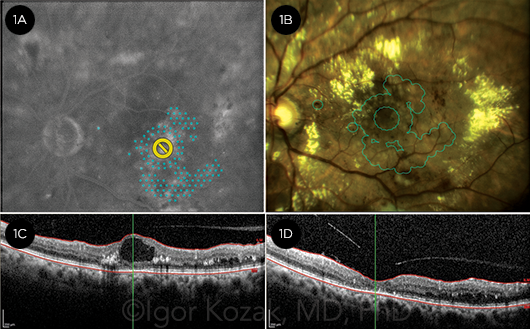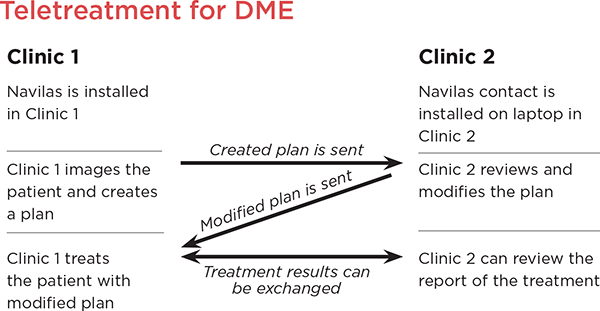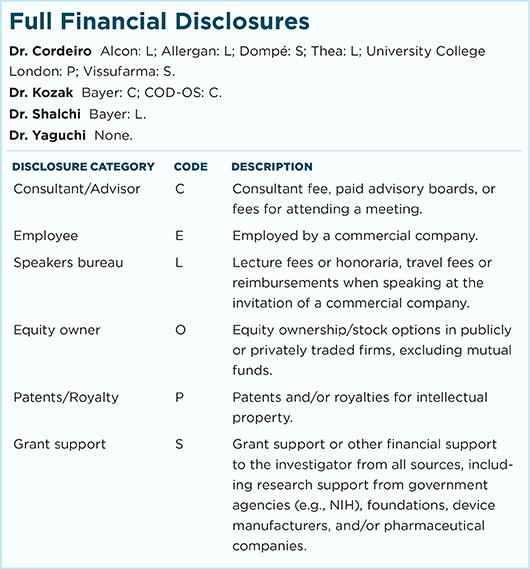Download PDF
In the first study of its kind, ophthalmology researchers on opposite sides of the globe have used telemedicine as a tool for treatment, rather than for screening and diagnosis. In 10 patients with diabetic macular edema (DME), 16 eyes underwent navigated focal laser photocoagulation using a novel teleretinal treatment plan.1
 |
BEFORE AND AFTER. (1A) Image of teleophthalmology treatment plan (blue dots) on fluorescein angiogram in an eye with DME. (1B) Post-treatment color fundus image showing hard exudates (yellow) and laser burns (blue circles). (1C) SD-OCT B-scan before laser treatment demonstrates hard exudates (intraretinal hyperreflective bodies) and foveal cyst/macular edema. (1D) SD-OCT B-scan following treatment demonstrates reduction in exudates and the amount of macular edema.
|
Long-distance consult. A clinic in Riyadh, Saudi Arabia (Clinic 1) performed the initial imaging with spectral-domain optical coherence tomography (SD-OCT) and fluorescein angiography. The angiograms were then registered to the patient’s fundus image using the Navilas laser system’s software and sent in an encrypted format to a second location in West Columbia, South Carolina (Clinic 2). Using the same Navilas system, a surgeon at Clinic 2 assessed an off-line treatment plan that targeted the treatment zones (areas of leaking microaneurysms). The surgeon then transmitted the treatment plans back to Clinic 1, where surgeons successfully executed the plans without any changes in all 16 eyes.
No registration errors. Image registration is a critical component of the retinal telephotocoagulation introduced in this study. “And we found the registration algorithms to be very precise,” said lead author Igor Kozak, MD, PhD, at Moorfields Eye Hospital Centre in Abu Dhabi, United Arab Emirates. “From prior studies, we know that the perfect alignment takes anywhere from 5 to 9 registration marks on the retina. We were getting a perfect match at times with just 3 or 4.” Consequently, the researchers were able to transfer images between clinics without registration error.

Looking ahead. Although this study provides an example of real-time teleophthalmology, it is also possible to use a store-and-forward application between multiple clinics. “Ideally, we would like to involve more clinics at many locations,” said Dr. Kozak.
“We also believe that using a centralized image center could help standardize treatment in trials, where lasers are currently used in different ways at the discretion of the treating physician—often leading to interoperator variability.”
—Annie Stuart
___________________________
1 Kozak I et al. Graefes Arch Clin Exp Ophthalmol. 2017. Published online Apr 26, 2017.
___________________________
Relevant financial disclosures—Dr. Kozak: None.
For full disclosures and disclosure key, see below.

More from this month’s News in Review